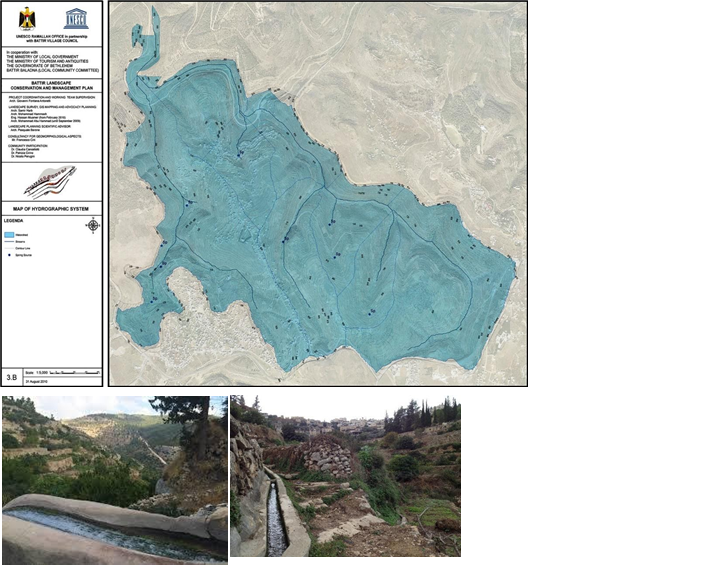Water Resources on site
The availability of springs in Battir WHP attracted people who settled the area and adapted its steep landscape into arable land, through developing complex irrigation systems for the water supply (see Map 3.2, photos 3.3 and 3.4). This led to the creation of a unique cultural landscape composed of agricultural terraces that supported bountiful cultivation of olives and vegetables and other crops (MoTA, 2013). Battir alone has more than ten water springs. The most important springs are Ein Al-Balad and Ein Jama’. The water from these springs is collected in two pools and used to irrigate the surrounding man-made dry-stone terraces. The water from these two fountains and the irrigation system, including the canals and pools, are public property, and are managed by Battir’s eight main families (Tmeizeh, 2004). The village of Husan contains more than twelve springs. The main spring is Ein El- Haweyyeh and the remaining springs are located west of the village along the Spring Valley (Wadi Al-‘Aion), which is comprised of nine springs spread along it: Ein-Alsukhuna, Ein Elerq, Ein Alnamous, Ein Kadra, Ein Alaros, Ein Ateah, Ein Alateqa, Ein Albaqe’a, and Ein Alamoud (Al-balad). The springs have their own irrigation traditions, customs and water distribution system, including canals and pools, and are managed by Husan’s farmers (MoTA, 2018).


